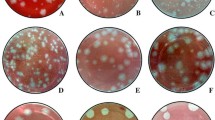Abstract
Conflicting data existed for the antiviral potential of the chicken Mx protein and the importance of the Asn631 polymorphism in determination of the antiviral activity. In this study we modified the chicken Mx cDNA from the Ser631 to Asn631 genotype and transfected them into COS-I cells, chicken embryonic fibroblast (CEF) or NIH 3T3 cells. The Mx protein was mainly located at the cytoplasm. The transfected cell cultures were challenged with newcastle disease virus (NDV) or vesicular stomatitis virus (VSV), cytopathic affect (CPE) inhibition assay showed that the times for development of visible and full CPE were significantly postponed by the Asn631 cDNA transfection at 48 h transfection, but not by the Ser631 cDNA transfection. Viral titration assay showed that the virus titers were significantly reduced before 72 h postinfection. CEF cells was incubated by the cell lysates extracted from the COS-I cells transfected with pcDNA-Mx/Asn631, could resist and delayed NDV infection. These data suggested the importance of the Asn631 polymorphism of the chicken Mx in determination of the antiviral activities against NDV and VSV at early stage of viral infection, which were relatively weak and not sufficient to inhibit the viral replication at late stage of viral infection.






Similar content being viewed by others
References
Haller O, Stertz S, Kochs G (2007) The Mx GTPase family of interferon-induced antiviral proteins. Microbes Infect 9:1636–1643
Pavlovic J, Zurcher T, Haller O, Staeheli P (1990) Resistance to influenza virus and vesicular stomatitis virus conferred by expression of human MxA protein. J Virol 64:3370–3375
Meier E, Kunz G, Haller O, Arnheiter H (1990) Activity of rat Mx proteins gainst a rhabdovirus. J Virol 64:6263–6269
Bazzigher L, Schwarz A, Staeheli P (1993) No enhanced influenza virus resistance of murine and avian cells expressing cloned duck Mx protein. J Virol 195:100–112
Bernasconi D, Schultz U, Staeheli P (1995) The interferon-induced Mx protein of chickens lacks antiviral activity. J Interferon Cytokine Res 15:47–53
Ko JH, Jin HK, Atsushi A, Ayato T, Ai N, Hiroshi K, Hironao H, Mutsuo O, Masaoki T, Masahide N, Makoto M, Tomomasa W (2002) Polymorphisms and the differential antiviral activity of the chicken Mx gene. Genome Res 4:595–601
Ko JH, Takada A, Mitsuhashi T, Agui T, Watanabe T (2004) Native antiviral specificity of chicken Mx protein depends on amino acid variation at position 63. Int Soc Anim Genetics, Anim Genetics 35:119–122
Ko JH, Jin HK, Asano A, Takada A, Ninomiya A, Kida H, Hokiyama H, Ohara M, Tsuzuki M, Nishibori M, Mizutani M, Watanabe T (2002) Polymorphisms and the differential antiviral activity of the chicken Mx gene. Genome Res 12:595–601
Benfield CT, Lyall JW, Kochs G, Tiley LS (2008) Asparagine 631 variants of the chicken mx protein do not inhibit influenza virus replication in primary chicken embryo fibroblasts or in vitro surrogate assays. J Virol 82:7533–7539
Sironi L, Williams JL, Moreno-Martin AM, Ramelli P, Stella A, Jianlin H, Weigend S, Lombardi G, Cordioli P, Mariani P (2008) Susceptibility of different chicken lines to H7N1 highly pathogenic avian influenza virus and the role of Mx gene polymorphism coding amino acid position 631. J Virol 380:152–156
Benfield CT, Lyall JW, Tiley LS (2010) The cytoplasmic location of chicken mx is not the determining factor for its lack of antiviral activity. PLoS ONE 5:e12151
Yin CG, Zhang CS, Zhang AM, Qin HW, Wang XQ, Du LX, Zhao GP (2010) Expression analyses and antiviral properties of the Beijing-You and White Leghorn myxovirus resistance gene with different amino acids at position 631. Poult Sci 89:2259–2264
Jin HK, Takada A, Kon Y (1999) Identification of the murine Mx2 gene: interferon-induced expression of the Mx2 protein from the feral mouse gene confers resistance to vesicular stomatitis virus. J Virol 73:4925–4930
Haller O, Arnheiter H, Lindenmann J (1980) Host gene influences sensitivity to interferon action selectively for influenza virus. Nature 283:660–662
Haller O (1981) Inborne resistance of mice to orthomyxoviroses. Curr Top Microbiol Immunol 92:25–52
Haller O, Frese M, Kochs G (1998) Mx proteins: mediators of innate resistance to RNA viruses. Revenue scientifique et technique 17:220–230
Arnheiter H, Skuntz S, Noteborn M, Chang S, Meier E (1990) Transgenic mice with intracellular immunity to influenza virus. Cell 62:51–61
Acknowledgments
We thank Huaichang Sun for critically reading the manuscript. This work supported by Research and Innovation Program for Graduate Cultivation of Jiangsu Province in 2010; National Natural Science Foundation of China (30871791); Major Basic Research Program for Natural Science of Jiangsu Province; Specialized Research Grant for Doctoral program(20103250110006); “Six talents in six fields” grant.
Author information
Authors and Affiliations
Corresponding author
Rights and permissions
About this article
Cite this article
Li, B., Fu, D., Zhang, Y. et al. Partial antiviral activities of the Asn631 chicken Mx against newcastle disease virus and vesicular stomatitis virus. Mol Biol Rep 39, 8415–8424 (2012). https://doi.org/10.1007/s11033-012-1694-9
Received:
Accepted:
Published:
Issue Date:
DOI: https://doi.org/10.1007/s11033-012-1694-9




